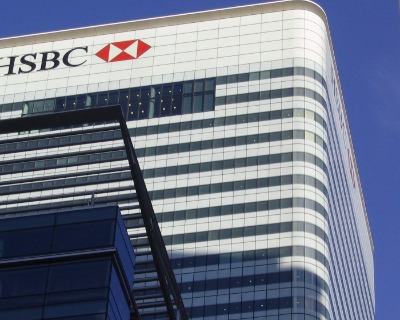HSBC predicts services to contribute a quarter of global trade by 2030
The new global trade forecast predictions from HSBC with research partner Oxford Economics see the services industry accelerate steadily to stand at a quarter of global trade by 2030. But the prediction could fall short if countries accelerate the tightening of trade barriers due to the political landscape.

The new global trade forecast predictions from HSBC with research partner Oxford Economics see the services industry accelerate steadily to stand at a quarter of global trade by 2030. But the prediction could fall short if countries accelerate the tightening of trade barriers due to the political landscape.
HSBC’s new global trade forecast expects services to be 25% of global trade by 2030, while the value of global goods exports is expected to expand 6% a year up to 2030. The bank sees this as resulting from the integration of technology into the supply chain and a rise in demand. However, there will be a reduction in these figures if tariff barriers are implemented and US trade policy tightens.
Capital Economics’ senior global economist, Andrew Kennington, tells TXF: “All the events of the last year, political and economic, have made it more difficult to see such a rapid increase in services trade. For that kind of growth you require some progress on all the trade agreements that have currently stalled, such as TPP etc.”
The World Trade Organisation (WTO) definition of services is what HSBC is referring to, such as business-to-business services (B2B) including transportation, communication and technology.
HSBC has looked at trade data across the largest 25 economies, in conjunction with Oxford Economics applying the data to look at the service sector.
An estimate that services will average at 7% annual growth sees the industry contribute $12.4 trillion to global trade flows by 2030. This is an increase from an estimated $4.9 trillion this year.
The WTO cut its trade forecast for this year by more than a third in September. It also predicted that growth in international commerce was to fall behind the world economy, the first time in 15 years.
HSBC’s global head of product and propositions for trade and receivables finance, Vivek Ramachandran, spies potential in the services sector. He tells TXF: “Over 20% of trade today is in services, which is worth close to $5 trillion globally. Over the last 15 years, the amount attributed to trade in services has trebled.
“The services globally from a GDP perspective will be 75% of the developed economies, but it’s less than 25% of trade so we see that cashing up. A lot of it is going to be driven by technology and technological development.”
The report does acknowledge that economic and political ruptures are slowing trade of commodities and manufactured goods, but HSBC looks to the service industry for growth. It forecasts the contraction of global merchandise exports by about 3% this year. Cross-border sales of services has risen by 1% in nominal terms, which includes tourism, banking construction and software development.
The IMF says in its latest economic report that the volume of world trade in goods and services is growing at less than half the average rate of expansion seen over the past three decades.
The report acknowledges that if new trade tariffs are implemented, combined with Trump-driven protectionist policies and a ‘hard Brexit’, the value of goods and services trade will drop. The combined drop of the goods and services sector could be 3%, making HSBC’s current projection of $50 trillion by 2030 fall to $48.8 trillion.
Ramachandran says: “In the short term I’m sure there is going to be continued volatility, but if you take the medium term view and look at how demographics are evolving and the genuine benefits of trade to economics and the wider society, I think there is every reason to believe in continued growth of trade in services.”
However, financial markets are showing signs of apprehension. Sovereign bond yields are up from record lows with many stock markets looking shaky.
Kennington says: “In terms of volume of trade, trade volumes have been almost flat in the past year with almost zero growth. 6% of global goods exports is looking quite optimistic, assuming a quite high inflation rate in the current climate of the markets.
“The numbers do look slightly on the high side for merchandise trade and for services trade, as there are massive uncertainties when we look at the 2030 predictions.”
HSBC sees technology as a contributing factor to its forecast, not just the current market situation. “Demand and technology are set to grow,” says Ramachandran. “Supply chains are also becoming a lot more intertwined and dispersed, which shows the growth in trade, services and goods are not necessarily distinct from each other.”
Well, as the adage says, time will tell.





